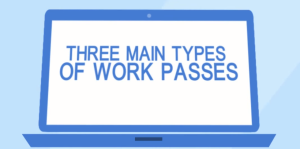
Our Singapore Corporate Tax lessons are back! (I know what you’re thinking… nothing says exciting like taxes). This time we’ll be talking about how employers in Singapore should handle tax forms for their employees. The IRAS is trying to digitize the entire system by introducing the Auto Inclusion Scheme this year and linking it to CPF contributions. In short, filing tax returns is going to be a smoother, more integrated process.
Under the Income Tax Act, there are four forms that employers should be aware of:
- Form IR8A: This is to declare income of all employees
- Appendix 8A: This form should be completes if the employee is provided with benefits-in-kind unless these benefits are exempted from Income Tax
- Appendix 8B: If the employee has benefited from any Share Ownership Plans, then this needs to be completed
- Form IR 8S: Must be completed if excess CPF contributions are made by the employer.
Explanatory notes on each form are here. Income tax returns must be filed for the following people:
- Full time resident employees
- Part time resident employees
- Non-resident employees
- Company director (including a non-resident director)
- Pensioner and
- Employees who have left the organisation within the financial year
For your reference, here are the tax rates for different income brackets:
| Taxable Income Bracket | Total tax on income below bracket | Tax rate on income in bracket |
| 0-20,000 | 0 | 0 |
| 20,001-30,000 | 0 | 2 |
| 30,001-40,000 | 200 | 3.5 |
| 40,001-80,000 | 550 | 7 |
| 80,001-120,000 | 3,350 | 11.5 |
| 120,001-160,000 | 7,950 | 15 |
| 160,001-200,000 | 13,950 | 17 |
| 200,001-320,000 | 20,750 | 18 |
| >320,001 | 42,350 | 20 |
The Auto Inclusion Scheme is a system for recording employee income and tax related information for companies with 12 or more employees for the entire year, ending 31 December 2014. Companies have to submit employee information to IRAS electronically by March 1st of every year, starting from 2015. This way, companies do not need to distribute hard copies of the above forms for employees to file their income tax returns.
If employers use payroll software to generate payroll, then the software can be used to submit files to AIS using another (free) software provided by the IRAS called the Validation and Submission Application. The payroll software should meet the IRAS file format specifications in order to submit forms. The Validation and Submission Application software can be downloaded here.
Once every employee’s details are filled in through AIS, companies should inform their employees to file their tax returns through the myTaxPortal. Employees no longer need to fill in their income and details from the four forms above because the AIS system already has it stored.
Employers who have fewer than 12 employees are also encouraged to use the AIS by filling out this form and emailing it to ais@iras.gov.sg. After submitting the form, companies will also have to go through a trial exercise before joining the AIS.
The AIS system can be linked to CPF Data in order to fill up Form IR 8S easily. The system makes for smooth functionality across the IRAS and CPF platforms. To sign up for the AIS and CPF Data Link-up Service from 2016, this application form must be filled. For existing AIS members who want to use the CPF Data Link-Up Service, this application form must be filled.
Hope this helps! If you want to know how to pay up CPF contributions, we’ve got you covered. More on Tax Clearance and CPF contributions later.
Disclaimer: As always, consult your lawyer or accountant for advice! We are here to help, but your specific situation should be reviewed by a professional with complete knowledge of your situation.

 It is important to note that Singapore companies are required to pay Foreign Worker Levy (FWL) for the Work Pass and S Pass holders. This levy is imposed by the Singapore Government to regulate foreign workers numbers in the country.
It is important to note that Singapore companies are required to pay Foreign Worker Levy (FWL) for the Work Pass and S Pass holders. This levy is imposed by the Singapore Government to regulate foreign workers numbers in the country.